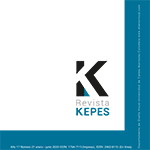Authors
Abstract
Despite the fact that art produced on the Internet and for Internet users does not always enjoy deserved publicity and publicity by hegemonic communication channels and artistic institutions, the production of art in cyberspace is encouraged thanks to the creation and development of virtual artist residencies. Just as there are physical residencies disseminated around the planet, there are virtual residencies in a wide variety of corners of cyberspace. The social network Twitter has hosted three residency programs with a high degree of innovation and experimentation of which there is hardly any dissemination. This research intends to deepen into this unexplored territory offering a ground-breaking critical analysis of these initiatives through their presentation, the study of the conditions and implications of the Twitter space in the development of such practices, and the study of the experiences of the agents involved (participating organizers and artists) with whom an open-ended questionnaire has been contacted and sent. The set of conclusions obtained seeks, rather than confirming a hypothesis, to discover new relationships between the appproaches, objectives, stimuli, possibilities and developments of these residencies that should be taken into consideration both for the study of new artistic practices on the web as well as to face the approaches and development of future and similar initiatives.
References
Bourne, C. (2015). VIRTUAL ART RESIDENCIES: A new Model of AIR. Recuperado de https://virtualartistresidency.wordpress.com/
Fernández, J.L. y Ramos, A. (2006). “El arte de habitar. Una experiencia sobre vivienda y medioambiente urbano”. En Democracia Ecológica. Formas y experiencias de participación en la crisis ambiental. Sevilla: Editorial Atrapasueños-UNILCO. Pp. 283-308.
Heidegger, M. (1994). Conferencias y Artículos. Barcelona: Ediciones del Serbal.
IN-SONORA. (s.f). IN-SONORA Muestra de arte sonoro e interactivo. Recuperado de http://in-sonora.org
Lindón, A. (2000). La vida cotidiana y su espacio-temporalidad. Rubí (Barcelona): Anthropos Editorial; el colegio Mexiquense/Centro Regional de Investigadores Multidisciplinarias (UNAM).
López, E. (2012). “Twitter como argumento, herramienta y soporte para la producción artística contemporánea”. FORMA. REVISTA D’HUMANITATS, 6, 33-47.
López, J.I. (2007). Todo construir es ya un habitar. Puente. Ingeniería, Sociedad, Cultura, II (5), 2-7.
Maldonado, C. (2014). El (des)orden de las ciudades. Análisis, 46 (85), 215-231. DOI: https://doi.org/10.15332/s0120-8454.2014.0085.03
Morse, J. (2002). Enhancing the usefulness of qualitative inquiry: gaps, directions and responsibilities. Qualitative Health Research, 12 (10), 1419-1426.
THE TWITTER ART FEED BROOKLYN MUSEUM @1stfans. (s.f). 1stfans. Recuperado de https://www.brooklynmuseum.org/support/1stfans_twitter_art_feed/
Trojanska, W. (2013). Virtual Art Residencies – a Manual. Interactive Contemporary Art + Thought: Art and Mobility, (55). Recuperado de http://artmobility.interartive.org/virtual-art-residencies-a-manual-weronikatrojanska/
TWITTERER IN RESIDENCE NEW MEDIA SCOTLAND. (s.f). About Twitter. Recuperado de http://www.mediascot.org/twitter
Uribe, M.L. (2014). La vida cotidiana como espacio de construcción social. Procesos Históricos: Revista de Historia y Ciencias Sociales, (25), 100-113.
Virilio, P. (1988). Estética de la desaparición. Barcelona: Anagrama.

 PDF (Español)
PDF (Español)
 FLIP
FLIP





















